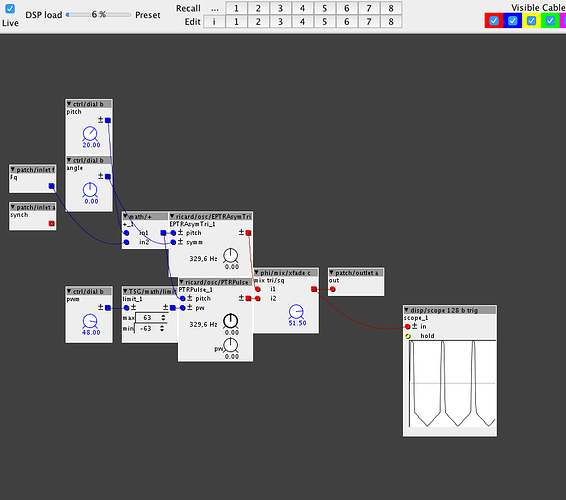Hello there,
thank you @johannes and community folks for this wonderful toy!
I'm trying to make a kind of Moog One oscillator for axoloti.
It is a mix of:
- triangle osc, with dial to change the angle into saw + or -.
- and a square osc that can be xfaded into the first triangle osc. dial for Pw should go narrow like the lfo example in the image.
I have no skill in coding, so I did something with @SirSickSik sss/osc/trisaw, (thank you Sir for all the crazy sounds!) and osc/brds/square.
Is it possible to make square pwm as narrow as the image of the lfo I put as example? does it make sense?
Moog One has oled screens for each osc, showing fixed waveforms morphing with parameter changes. I'm not shure if it shows the real waveform we hear actually, but curves look similar in my patch, except for the pw that doesn't go so thin when dial is close to zero.
Maybe someone in the community already did something close to that?
I guess it would be more cpu efficient in a single object, interesting for bigger patches with a few of these oscillators...
So,
I would use from sss/osc/trisaw: pitch, FM with sync inlet, Slope (the 1st one) with dedicated inlet.
and xfade or smux for square osc merging, with Timbre dial: pwm.
I tried to modify these objects code without success.
Let me know if anyone interested with this!


